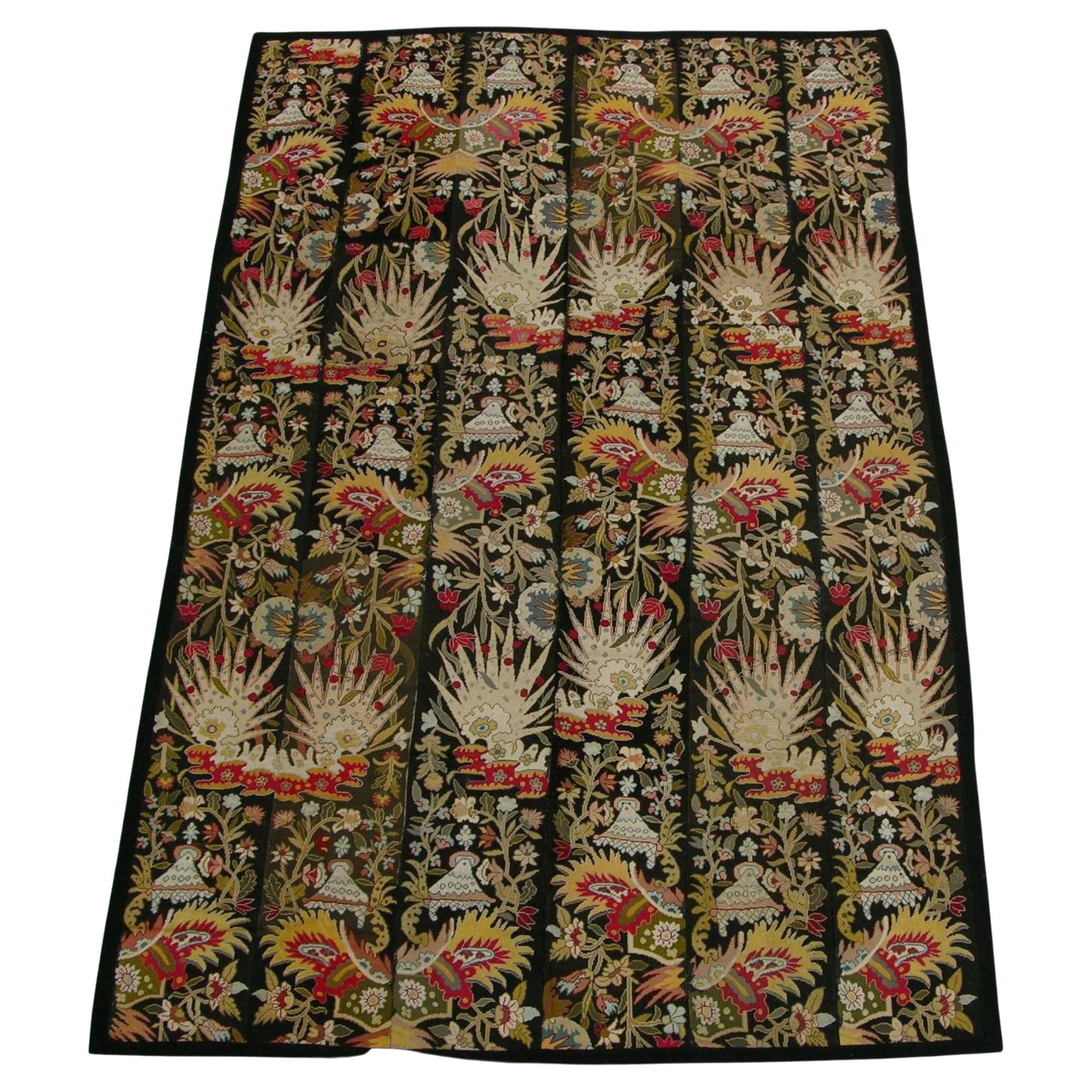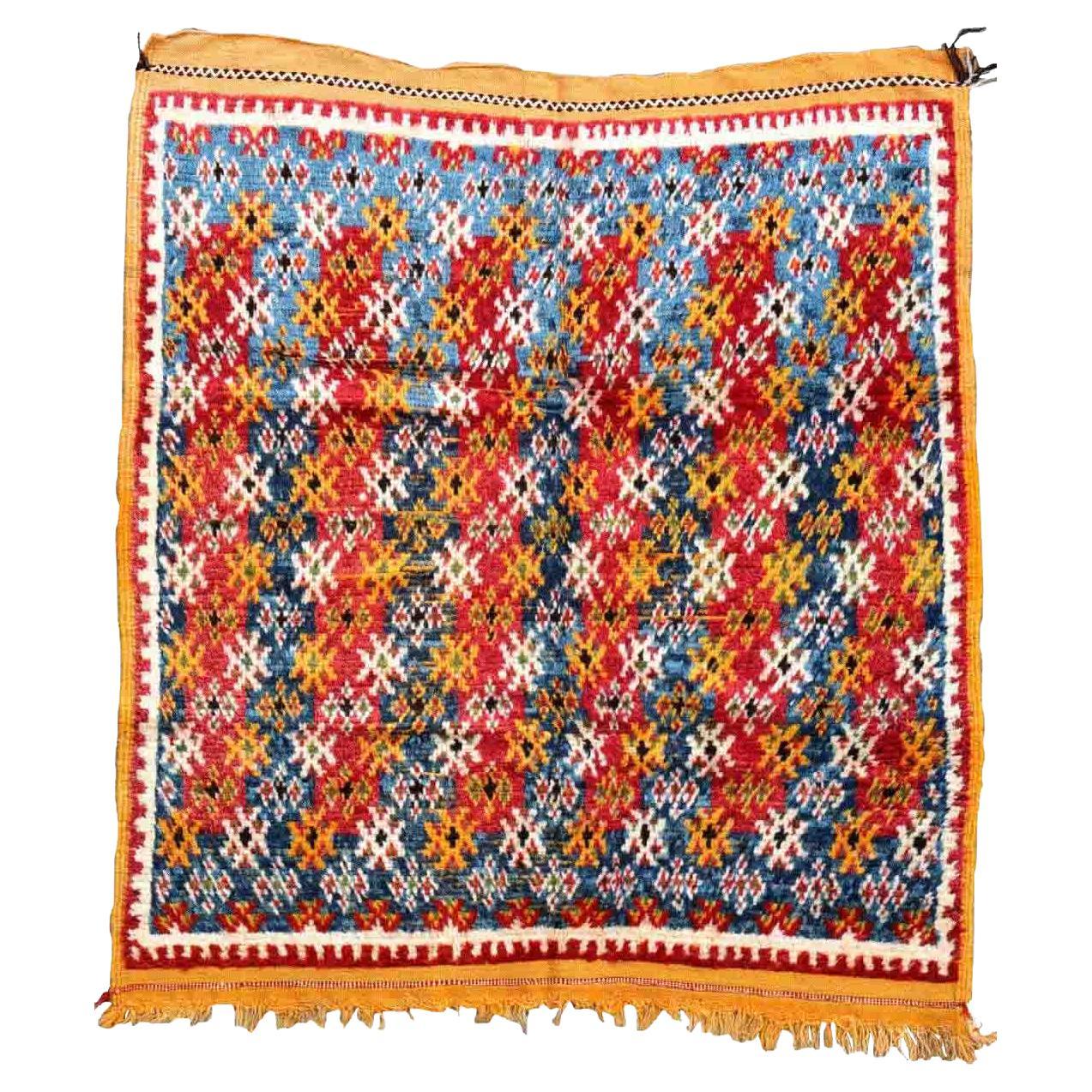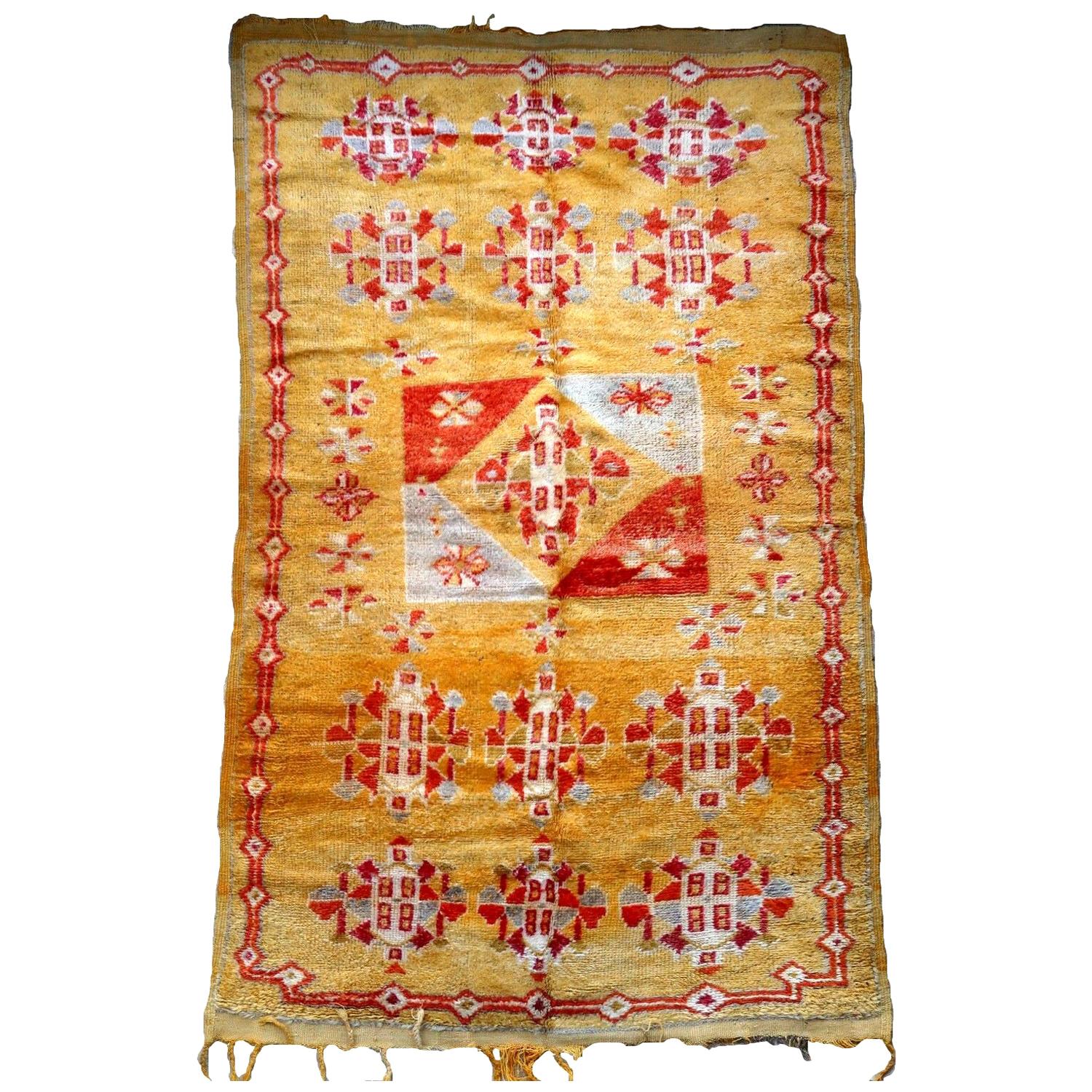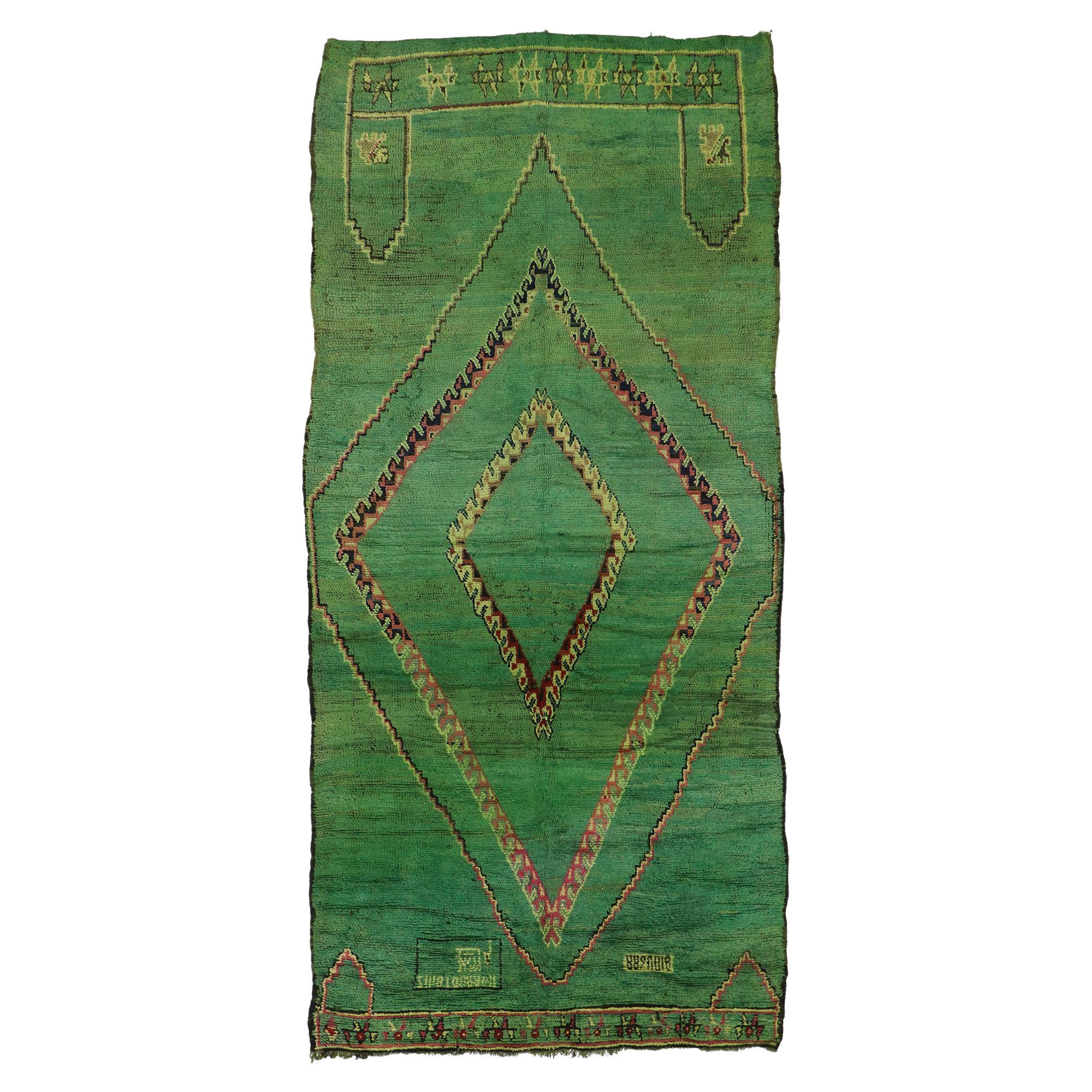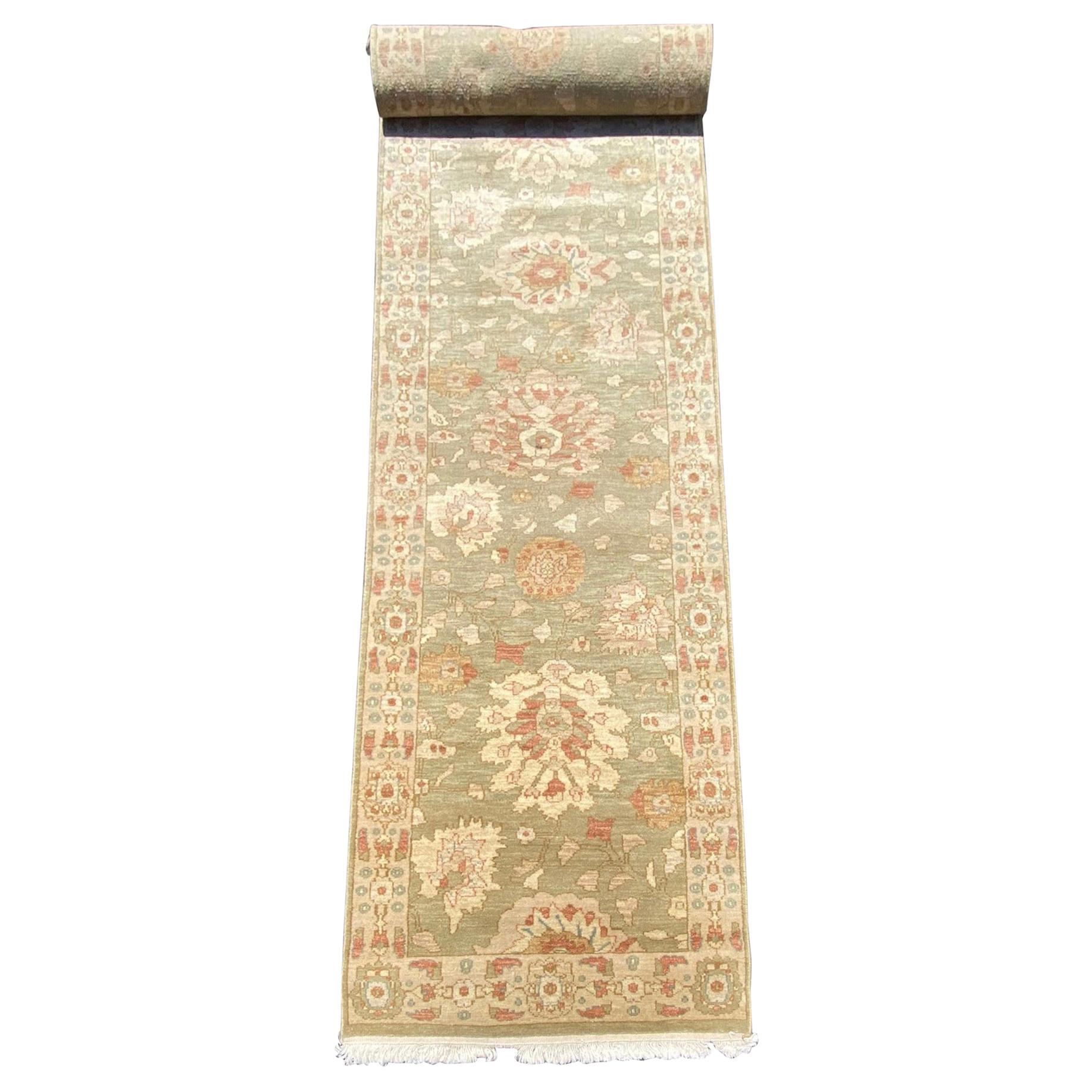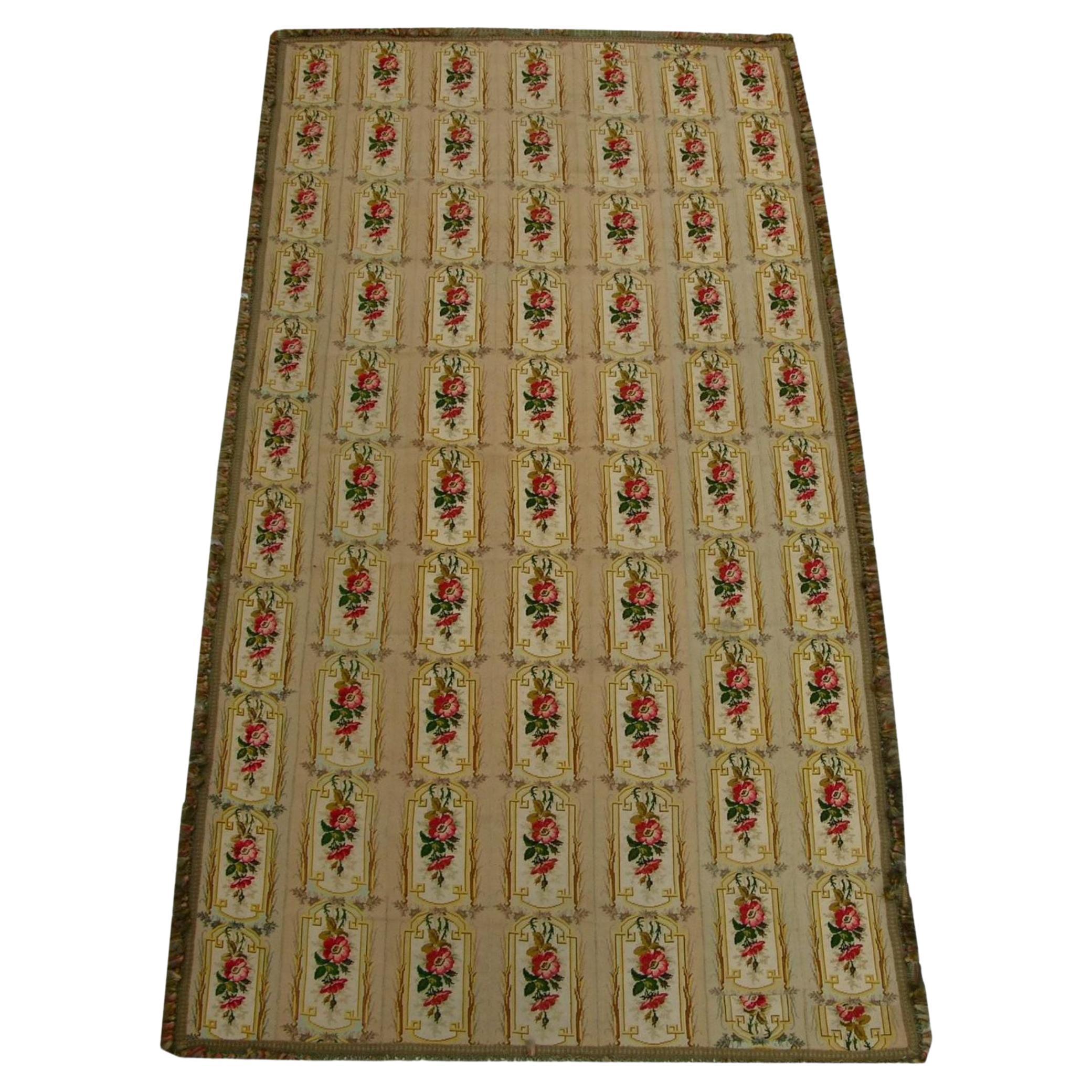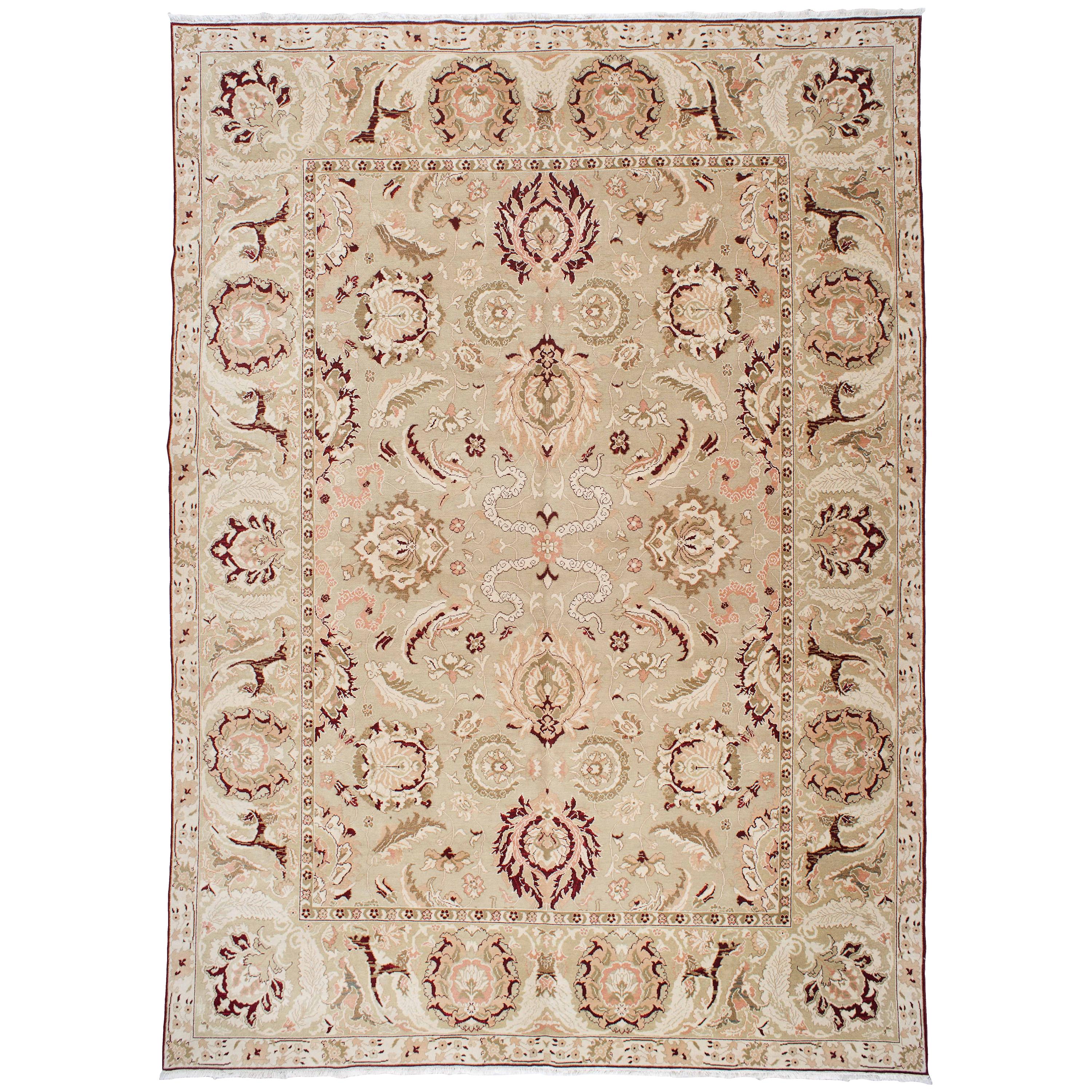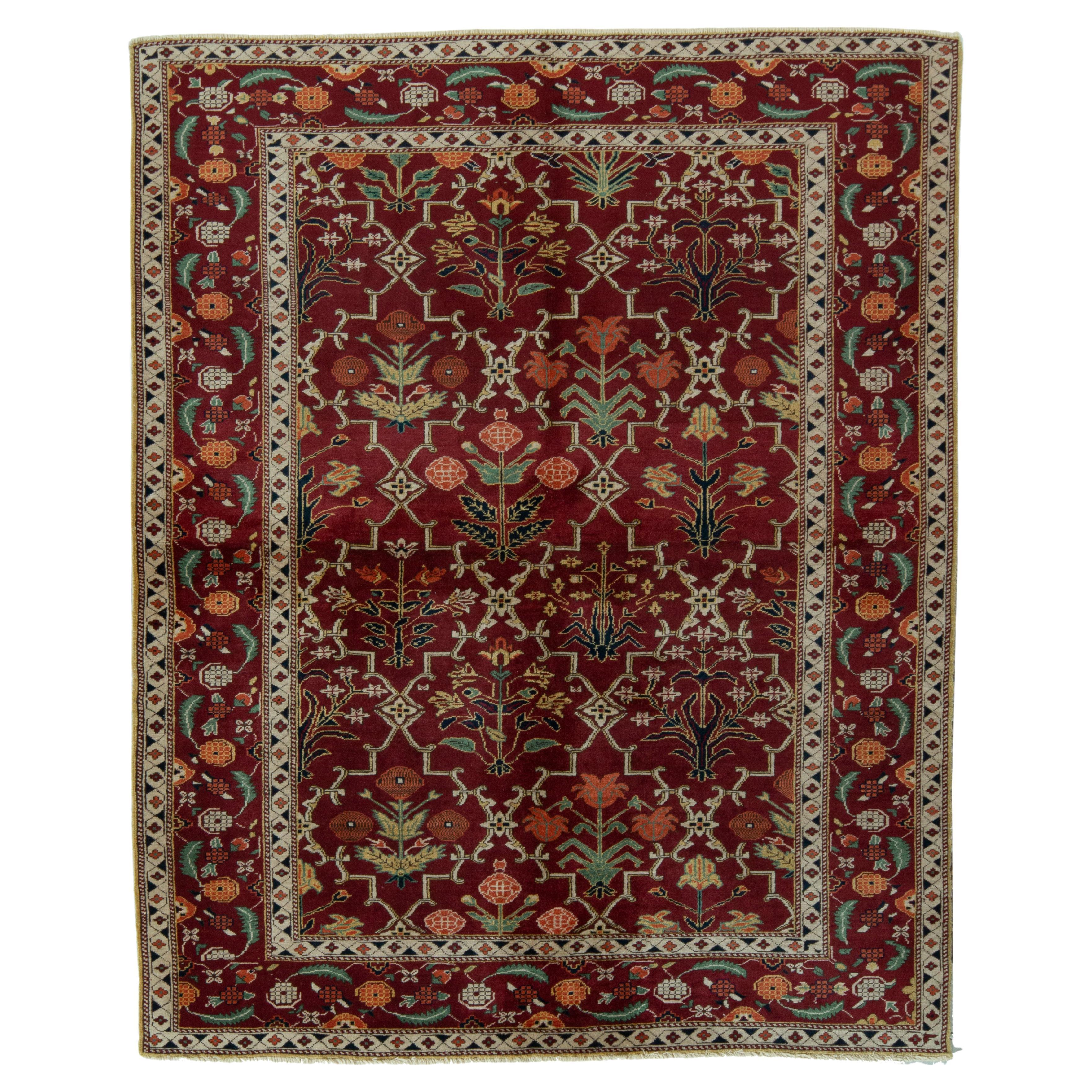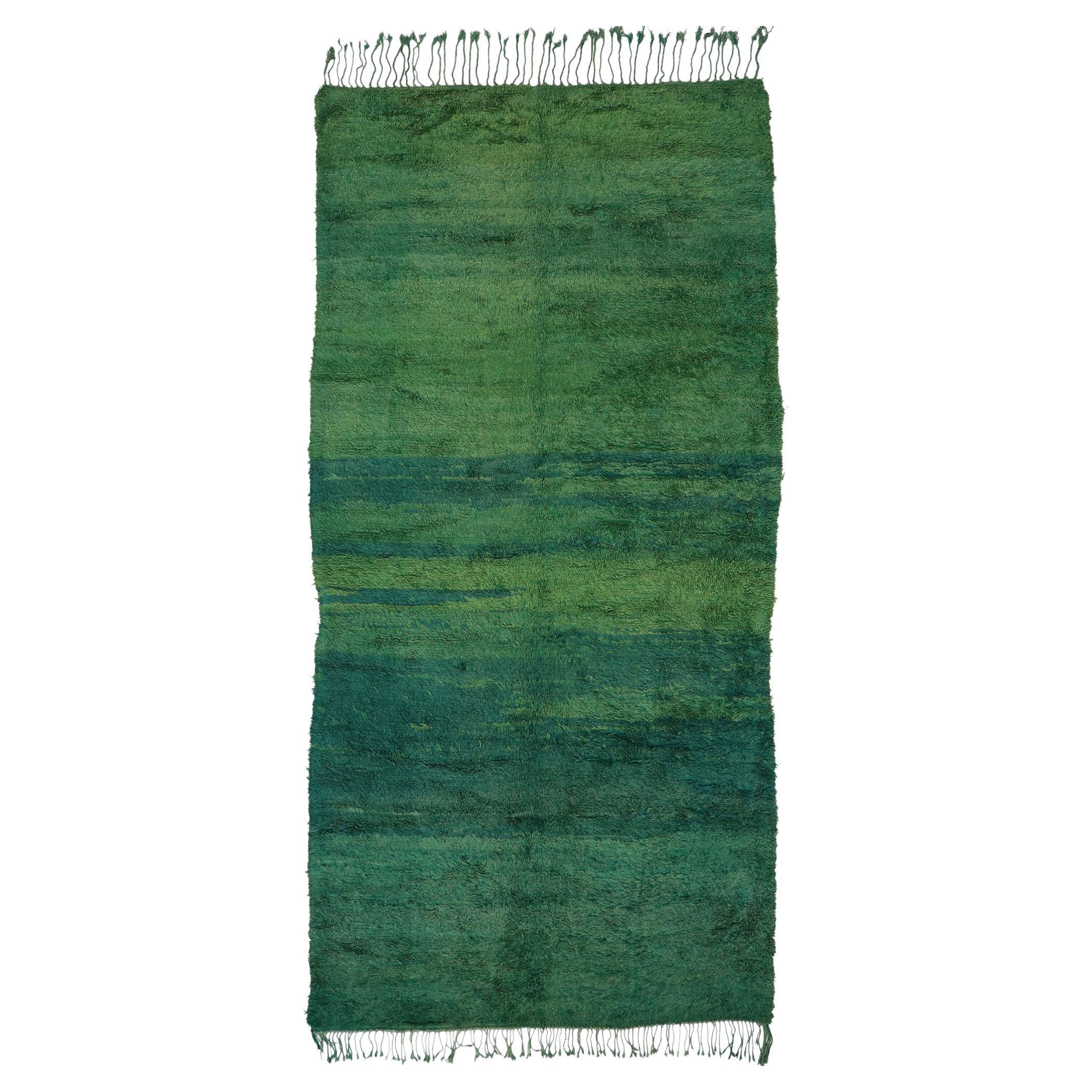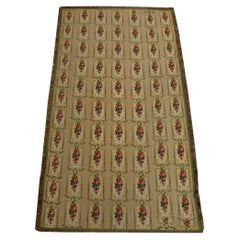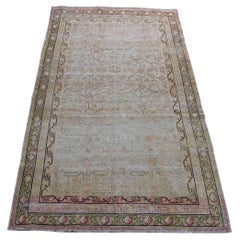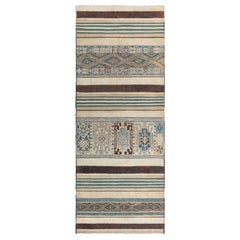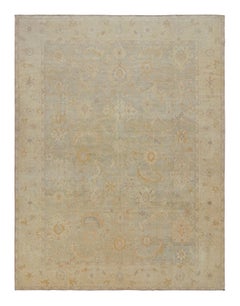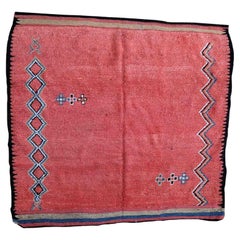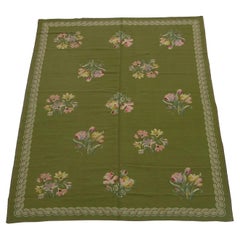
1920s Vintage Mute Green Floral Style Needlework Rug
View Similar Items
Want more images or videos?
Request additional images or videos from the seller
1 of 5
1920s Vintage Mute Green Floral Style Needlework Rug
About the Item
About the Seller
5.0
Gold Seller
These expertly vetted sellers are highly rated and consistently exceed customer expectations.
Established in 1920
1stDibs seller since 2023
30 sales on 1stDibs
More From This SellerView All
- 1920s Antique Floral Design Part Silk Needlework RugLocated in Los Angeles, USNeedlepoint rugs were created using the traditional needlework weaving technique that is used to make everyday items from furniture to carpets and artwork. However, it has a fascinating history both as a hobby and as an industry. When many people think of carpets, they think of pile carpets or flat weave kilims, but needlepoint has also been used to create beautiful carpets. These carpets are durable and an important part of carpet history. Archaeologists and scholars consider the roots of needlepoint to have been around 1500 BC. They consider the first needlepoint to include the fine diagonal stitches that were used to sew tents together by the ancient Egyptians. The art eventually evolved into tapestry weaving. However, a tapestry weaving differs significantly from needlepoint in that it uses a loom and vertical warp. Tapestry weaving is closer to the weaving of kilims and pile rugs than canvas work. However, some still include tapestry weaving in the category of needlepoint because of the fine work that appeared during the late Renaissance. It can have a similar appearance to the untrained eye. Technically, tapestry weaving and needlepoint are not the same, and they do not use the same technique. The first actual needlepoint rugs and needle-points began to appear in the late Renaissance. Needlepoint is worked by creating stitches on a stiff canvas. The canvas is typically made from jute or linen and is quite durable. Pieces from the Renaissance were used to cover footstools, chairs, pillows, bed headboards, and other furnishings. They were also used as table coverings and wall coverings. You could also find them on many small items such as purses, shoes, and various adornments for clothing. During the Renaissance, the craft reached a high level of skill, and the designs became incredibly detailed and realistic. They mimicked many of the subjects and styles of famous paintings of the time. They created florals, still life designs, scenes, and geometric tiled pieces. Some of them mimicked the designs found in Persian Carpets. Needlepoint reached its peak popularity in the 19th century when it was considered a proper occupation for a lady. Needlepoint and embroidery held a similar place in societal status at the time. During this time, the work became finer, with some of the canvas reaching a high level of detail. The level of detail is determined by counting the number of mesh in an inch. During this time petit point by French needlewomen could have a mesh count as high as 45 mesh. This allowed women to create highly intricate designs with incredible levels of detail. It is possible to find many antique pieces of needlepoint besides rugs. Needlepoint rugs were popular in France and Spain, where the technique was adapted to create highly intricate designs that mimicked the designs in architecture and fashion. They were popular because they were durable, and it could be fashioned into a variety of items. The canvases themselves were durable, and the wool that they used was also strong, which means that many of the pieces were able to withstand daily use. We have many artifacts that have survived from this time period. Needlepoint rugs are important collectibles because they are different from the pile rugs and kilims that are typically found on the market. Needlepoint carpets are special because they take many hours to create, especially larger works. Needlepoint pieces of any type became popular throughout Europe during the 19th century. It is still a popular hobby today, but perhaps one of the most interesting stories is that of the Portuguese needlewomen of Arraiolos. The story of these women and their beautiful carpets begins in 1492. Needlepoint was a popular occupation in Spain, which had a large population of Moors and Jews. They were an integral part of Spanish culture. However, in 1492, Queen Isabella of Spain issued a proclamation that gave these ethnic groups the order to pack their bags and board ships headed...Category
Vintage 1920s Renaissance Revival Russian and Scandinavian Rugs
MaterialsWool, Silk
- 1920 Antique Floral Needlework RugLocated in Los Angeles, USNeedlepoint rugs were created using the traditional needlework weaving technique that is used to make everyday items from furniture to carpets and artwork. However, it has a fascinat...Category
Vintage 1920s Other Russian and Scandinavian Rugs
MaterialsWool, Cotton
- 1920s Antique Floral Samarkand RugLocated in Los Angeles, USAntique Samarkand Rugs: The desert oasis of Khotan was an important stop on the Silk Road. The people of Khotan were expert carpet weavers who produced high quality antique rugs and ...Category
Vintage 1920s Other Russian and Scandinavian Rugs
MaterialsWool, Cotton
- Antique Needlework Floral RugLocated in Los Angeles, USNeedlepoint rugs were created using the traditional needlework weaving technique that is used to make everyday items from furniture to carpets and artwork. However, it has a fascinat...Category
Antique Early 1900s Asian Other Russian and Scandinavian Rugs
MaterialsWool, Cotton
- 1920s Vintage Brown Botanical Style Bessarabian RugLocated in Los Angeles, USntique Bessarabian Rugs / Kilims in both pile and tapestry weaving technique are some of the more beautiful carpets to have been produced in Europe. Many of the Bessarabian Kilims we...Category
Antique Early 1900s Other Russian and Scandinavian Rugs
MaterialsWool, Cotton
- 19th Century Floral European Needlework RugLocated in Los Angeles, USArchaeologists and scholars consider the roots of needlepoint to have been around 1500 BC. They consider the first needlepoint to include the fine diagonal stitches that were used to...Category
Antique 19th Century Egyptian Kilim Western European Rugs
MaterialsWool, Cotton
You May Also Like
- Vintage Moroccan Geometric Green Kilim RugLocated in New York, NYVintage Moroccan geometric green handmade wool Kilim rug Size: 5'1" × 12'10" (155 × 391 cm). This antique Moroccan Kilim vintage round rug is a Fine study in abstract geometrics, int...Category
Mid-20th Century Moroccan Kilim Moroccan and North African Rugs
MaterialsWool
- Rug & Kilim’s Persian Sultanabad Style Rug In Green And Beige Floral PatternBy Rug & KilimLocated in Long Island City, NYThis hand-knotted wool 12x16 rug from the Modern Classics collection by Rug & Kilim draws inspiration from antique Persian Sultanabad rugs. Admirers of the craft will appreciate Sult...Category
2010s Egyptian Modern Moroccan and North African Rugs
MaterialsWool
- Handmade Antique Moroccan Berber Rug, 1920s, 1P99Located in Bordeaux, FRHandmade vintage rug from Morocco in Berber style and raspberry color. The rug is from the beginning of 20th century made by the Ouled Bou Sbaa tribe in the region of Chichaoua in Mo...Category
Vintage 1920s Moroccan Moroccan and North African Rugs
MaterialsWool
- Handmade Antique Moroccan Berber Rug, 1920s, 1P131Located in Bordeaux, FRHandmade antique Moroccan Berber rug in geometric design. Ait Ouaouzguit tribe rug from Ourzazate region in the High Atlas, Morocco. The ru...Category
Vintage 1920s Moroccan Moroccan and North African Rugs
MaterialsWool
- Handmade Antique Moroccan Berber Rug, 1920s, 1P50Located in Bordeaux, FRAntique handmade Moroccan rug in original good condition and yellow color. The rug id from the beginning of 20th century made in wool. -condition: original good, -circa: 1920s,...Category
Vintage 1920s Moroccan Moroccan and North African Rugs
MaterialsWool
- Vintage Berber Green Moroccan Rug with Tribal StyleBy Berber Tribes of MoroccoLocated in Dallas, TX21482 Vintage Berber Green Moroccan Rug with Tribal Style 06'04 x 13'05. Showcasing a bold expressive design, incredible detail and texture, this hand kno...Category
Late 20th Century Moroccan Tribal Moroccan and North African Rugs
MaterialsWool
Recently Viewed
View AllMore Ways To Browse
Vintage Needlework Art
Contemporary Moroccan Area Rug
Yellow Wo
Moroccan Brown
Retro 3 Piece Suit Womens
Orange Moroccan Abstract Rug
Vintage Wo
Vintage Moroccan Zemmour Berber Kilim Area Rug
Bohemian Moroccan Rug Small
Calvin Klein Rug
Vintage Moroccan Berber Wool Rug
Moroccan Style Berber Rug
Vintage Blue Moroccan
Vintage Moroccan Kilim Rug
Vintage Moroccan Runner
Vintage Moroccan Runner Rug
African Style Sofa
Corbusier Rug
